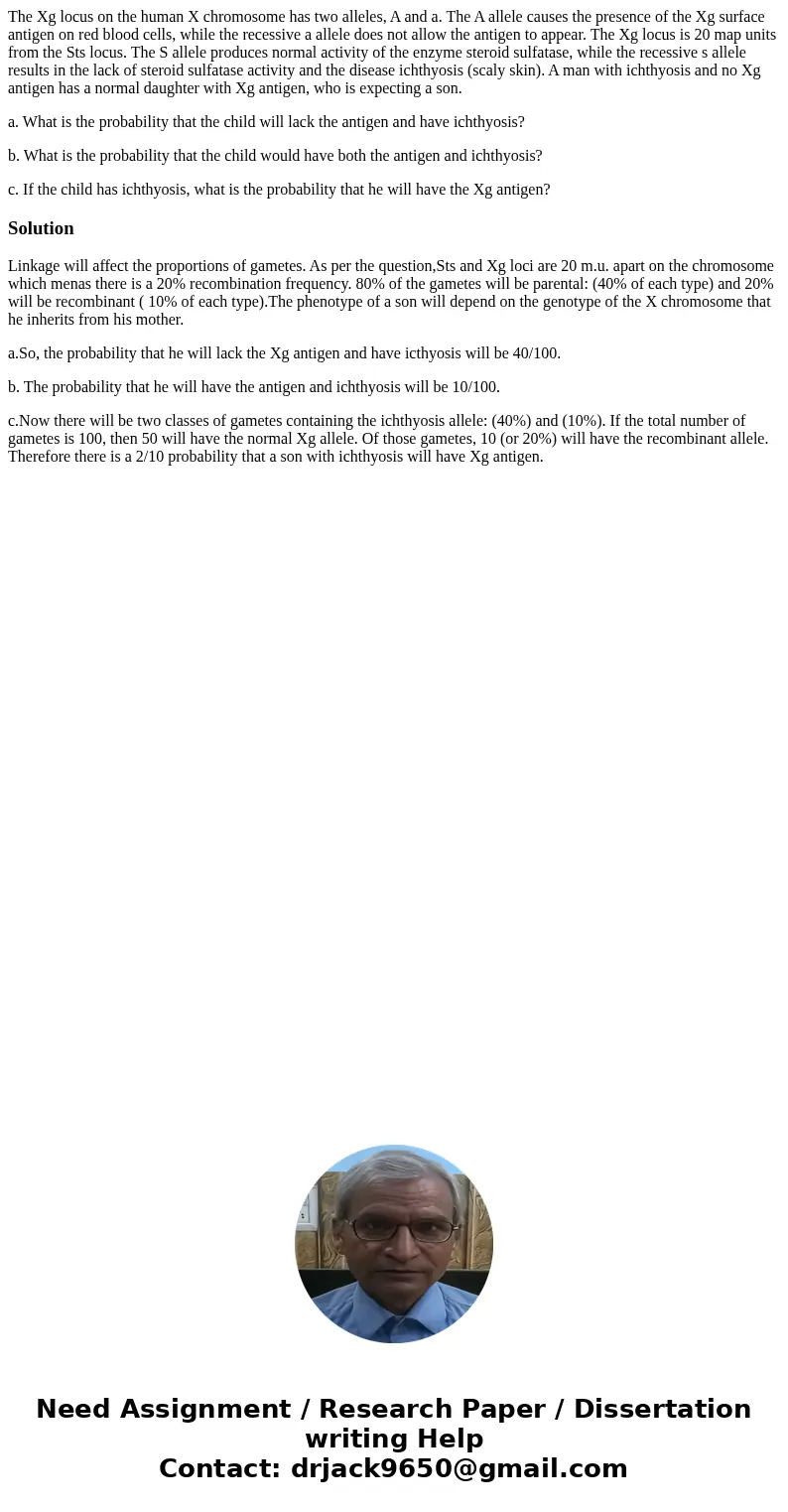The Xg locus on the human X chromosome has two alleles A and
The Xg locus on the human X chromosome has two alleles, A and a. The A allele causes the presence of the Xg surface antigen on red blood cells, while the recessive a allele does not allow the antigen to appear. The Xg locus is 20 map units from the Sts locus. The S allele produces normal activity of the enzyme steroid sulfatase, while the recessive s allele results in the lack of steroid sulfatase activity and the disease ichthyosis (scaly skin). A man with ichthyosis and no Xg antigen has a normal daughter with Xg antigen, who is expecting a son.
a. What is the probability that the child will lack the antigen and have ichthyosis?
b. What is the probability that the child would have both the antigen and ichthyosis?
c. If the child has ichthyosis, what is the probability that he will have the Xg antigen?
Solution
Linkage will affect the proportions of gametes. As per the question,Sts and Xg loci are 20 m.u. apart on the chromosome which menas there is a 20% recombination frequency. 80% of the gametes will be parental: (40% of each type) and 20% will be recombinant ( 10% of each type).The phenotype of a son will depend on the genotype of the X chromosome that he inherits from his mother.
a.So, the probability that he will lack the Xg antigen and have icthyosis will be 40/100.
b. The probability that he will have the antigen and ichthyosis will be 10/100.
c.Now there will be two classes of gametes containing the ichthyosis allele: (40%) and (10%). If the total number of gametes is 100, then 50 will have the normal Xg allele. Of those gametes, 10 (or 20%) will have the recombinant allele. Therefore there is a 2/10 probability that a son with ichthyosis will have Xg antigen.

 Homework Sourse
Homework Sourse